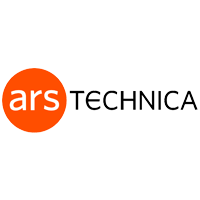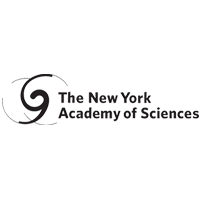2021 Media Watch Archives
Avoiding water bankruptcy in the drought-troubled Southwest: What the US and Iran can learn from each other
Public Radio International -
Amir AghaKouchak, UCI professor of civil & environmental engineering and others write, “More than 7,000 miles away, Iran is grappling with water problems that are similar to the U.S. Southwest’s but more severe. … As environmental engineers and scientists … we’ve closely studied the water challenges in both drought-prone regions. We believe past mistakes in the U.S. and Iran offer important lessons for future plans in the U.S. Southwest and other regions increasingly experiencing drought and water shortages.” Read More
Why the "Swiss Army knife" of climate solutions is so controversial
Salon -
Jack Brouwer, director of the Advanced Power and Energy Program at the University of California, Irvine, where he conducts research on a broad range of hydrogen applications, told Grist that commercially available power plant technology can currently burn a blend of up to 30 percent hydrogen gas and 70 percent methane. … For Brouwer, blending green hydrogen into the natural gas system, whether for power plants or homes, is still very much worth doing — not so much for the greenhouse gas benefits, but to create a new market for solar and wind power. Read More
Avoiding water bankruptcy in the drought-troubled Southwest: What the US and Iran can learn from each other
The Conversation -
Amir AghaKouchak, UCI professor of civil & environmental engineering and others write, “More than 7,000 miles away, Iran is grappling with water problems that are similar to the U.S. Southwest’s but more severe. … As environmental engineers and scientists – one of us is also a former deputy head of Iran’s Department of Environment – we’ve closely studied the water challenges in both drought-prone regions. We believe past mistakes in the U.S. and Iran offer important lessons for future plans in the U.S. Southwest and other regions increasingly experiencing drought and water shortages.” Read More
Op-Ed: Southern California’s beaches are running out of sand
Los Angeles Times -
Brett Sanders, is a UCI professor of civil and environmental engineering, urban planning and public policy. He leads the UCI Flood Lab and the Metropolitan Beaches Project and writes, “Southern California’s sandy beaches are under duress and need our help. … So far this isn’t primarily about climate change or rising sea levels. It’s about how local development and land use have altered natural processes that would have otherwise replenished the beaches. Sand on beaches is a lot like money in a bank account. It flows in and out, and the balance needs to stay in positive territory to avoid a calamity of problems.” Subscription required, you can request an electronic copy of the article by sending an email to communications@uci.edu.] Read More
Researchers use Starlink satellites to pinpoint location, similar to GPS
Ars Technica -
Signals from SpaceX Starlink broadband satellites can be used to pinpoint locations on Earth to within eight meters of accuracy, engineering researchers reported in a new peer-reviewed paper. … The research was conducted by [Zak] Kassas along with Joe Khalife (a postdoctoral fellow at the University of California, Irvine) and Mohammad Neinavaie (a Ph.D. student at UC Irvine). Kassas is also a UC Irvine [assistant] professor and director of the Autonomous Systems Perception, Intelligence, and Navigation (ASPIN) Laboratory, while Khalife and Neinavaie are members of the lab. Their experiment was conducted using an antenna on the UC Irvine campus. Read More
SpaceX's Starlink broadband satellites could be used for GPS navigation
Space -
SpaceX's Starlink satellites may be used for navigation and global positioning in addition to their core function of broadband Internet, a new research study suggests. … "We eavesdropped on the signal, and then we designed sophisticated algorithms to pinpoint our location, and we showed that it works with great accuracy," study author Zak Kassas, director of the Center for Automated Vehicles Research with Multimodal Assured Navigation (CARMEN) at Ohio State University, said in the statement. … They used the signals from several satellites and developed an algorithm to locate a position on Earth. Next, they placed an antenna on the University of California, Irvine campus in an attempt to find its location using Starlink. Their experiment placed the estimated position of the antenna, using Starlink signals, within 25 feet (7.7 m) of its actual position. Read More
Announcing the 2021 Blavatnik Regional Awards Winners and Finalists
The New York Academy of Sciences -
Honoring outstanding postdoctoral scientists from academic research institutions across New York, New Jersey, and Connecticut, the Blavatnik Family Foundation and the New York Academy of Sciences announced the three Winners and six Finalists of the 2021 Blavatnik Regional Awards for Young Scientists. … The following postdoctoral researchers have been named Finalists in their respective categories: … Optical physicist Maxim Shcherbakov works with a special class of artificial materials, known as semiconductor metamaterials that manipulate light in fascinating ways. … Shcherbakov has recently transitioned to a tenure-track position [as assistant professor of electrical engineering & computer science] at the University of California, Irvine. Read More
Why the ‘Swiss Army knife’ of climate solutions is so controversial
Grist -
Jack Brouwer, director of the Advanced Power and Energy Program at the University of California, Irvine, where he conducts research on a broad range of hydrogen applications, told Grist that commercially available power plant technology can currently burn a blend of up to 30 percent hydrogen gas and 70 percent methane. … For Brouwer, blending green hydrogen into the natural gas system, whether for power plants or homes, is still very much worth doing — not so much for the greenhouse gas benefits, but to create a new market for solar and wind power. Read More
Why California Wildfires Are Particularly Destructive in Fall
The Weather Channel -
A recent study from the University of California-Irvine found about 20% of California's wildfires from 2000 through 2019 were responsible for 97% of the total area charred. Over 90% of casualties and property losses in the state were due to larger wildfires over 500 acres, according to Tirtha Banerjee, [assistant professor, civil & environmental engineering], one of the study's co-authors. … "Before 2000, there were almost no human-caused wildfires along California's Pacific coastline, but now nearly every coastal county is experiencing increased risk," said Shu Li, a Ph.D. candidate [civil & environmental engineering] and lead author of the aforementioned University of California-Irvine study. Read More
The Blue Box is betting on the future of at-home breast cancer tests
TechCrunch -
You can take a pregnancy test or colon cancer test from your bathroom, or, these days, a COVID-19 test from the comfort of your living room. You might one day be able to get a breast cancer screening at home, too, if you have a urine sample and an artificial nose. That’s the vision behind The Blue Box, a startup competing this week at TechCrunch Disrupt’s Startup Battlefield. The company, founded by Judit Giró Benet while pursuing her Master’s at the University of California Irvine, is developing an at-home handheld device designed to screen urine samples for breast cancer. Read More










